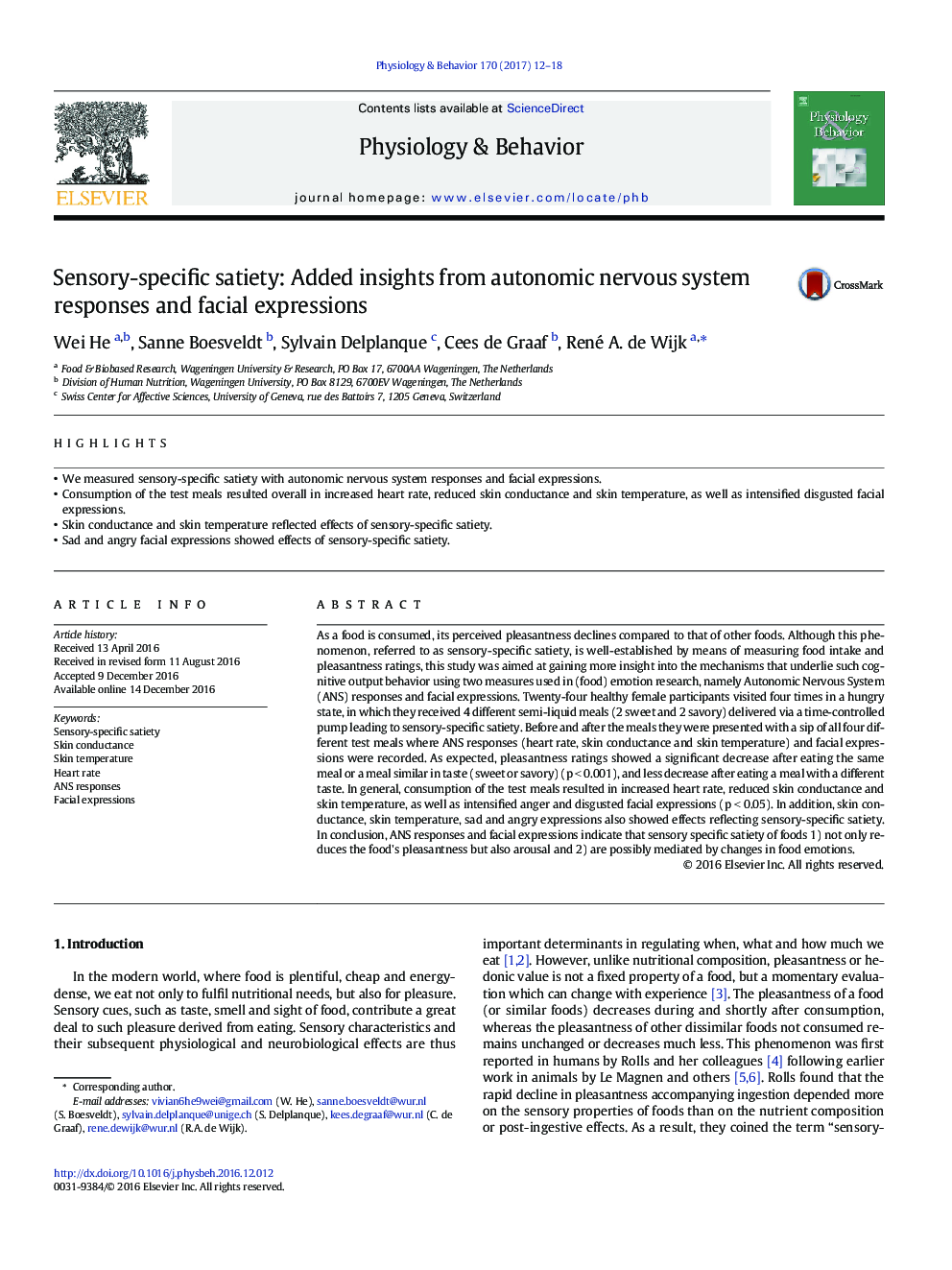| کد مقاله | کد نشریه | سال انتشار | مقاله انگلیسی | نسخه تمام متن |
|---|---|---|---|---|
| 5593793 | 1571149 | 2017 | 7 صفحه PDF | دانلود رایگان |
- We measured sensory-specific satiety with autonomic nervous system responses and facial expressions.
- Consumption of the test meals resulted overall in increased heart rate, reduced skin conductance and skin temperature, as well as intensified disgusted facial expressions.
- Skin conductance and skin temperature reflected effects of sensory-specific satiety.
- Sad and angry facial expressions showed effects of sensory-specific satiety.
As a food is consumed, its perceived pleasantness declines compared to that of other foods. Although this phenomenon, referred to as sensory-specific satiety, is well-established by means of measuring food intake and pleasantness ratings, this study was aimed at gaining more insight into the mechanisms that underlie such cognitive output behavior using two measures used in (food) emotion research, namely Autonomic Nervous System (ANS) responses and facial expressions. Twenty-four healthy female participants visited four times in a hungry state, in which they received 4 different semi-liquid meals (2 sweet and 2 savory) delivered via a time-controlled pump leading to sensory-specific satiety. Before and after the meals they were presented with a sip of all four different test meals where ANS responses (heart rate, skin conductance and skin temperature) and facial expressions were recorded. As expected, pleasantness ratings showed a significant decrease after eating the same meal or a meal similar in taste (sweet or savory) (p < 0.001), and less decrease after eating a meal with a different taste. In general, consumption of the test meals resulted in increased heart rate, reduced skin conductance and skin temperature, as well as intensified anger and disgusted facial expressions (p < 0.05). In addition, skin conductance, skin temperature, sad and angry expressions also showed effects reflecting sensory-specific satiety. In conclusion, ANS responses and facial expressions indicate that sensory specific satiety of foods 1) not only reduces the food's pleasantness but also arousal and 2) are possibly mediated by changes in food emotions.
Journal: Physiology & Behavior - Volume 170, 1 March 2017, Pages 12-18
